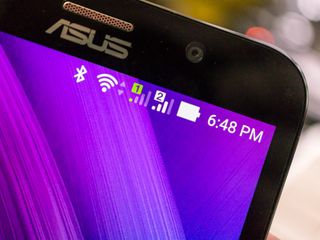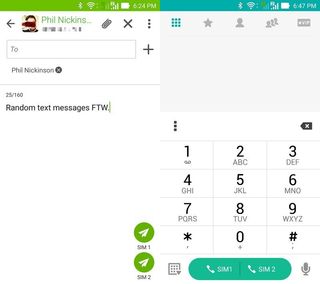Dual-sim unlocked phones - do you need one?

Honestly? You probably don't need a dual-SIM phone. Don't get me wrong, I know plenty of people out there do have a real need for more than one number being able to send and receive calls and messages from one phone, and it's great that the option is available. But some of us think of dual-SIM phones as some sort of magic, because double the mobile network connection means double the awesome.
That's not really how it works. Let's take a look at one of the recent "popular" dual-SIM phones, the ASUS ZenFone 2, and just what you can — and can't — do with two SIM cards.
Let's start by saying not every dual-SIM phone works the same way. Take our example — the ZenFone 2 — and you'll find that SIM one acts like a normal 4G LTE network connection, complete with the ability to make calls, send text and picture messages, and use your carriers mobile data network when you're not using Wifi. Meanwhile, SIM two is just chilling, and can only use the old (and soon to be repurposed) 2G connection from your carrier for any data needs.
Both SIM cards are active, and incoming calls or messages can be sent to either when someone uses the corresponding number. You can also make calls and send messages using either SIM card, including picture messages (remember that 2G network connection on SIM 2), as long as the application you're using for SMS supports a dual-SIM configuration. The stock messaging app on the ZenFone 2 does a fine job here, but some apps — looking at you, Google Messenger — do not.

What you can't do, and this is where some folks get a bit confused, is use two simultaneous mobile data network connections for double-fast speeds or as a way to "network multitask" and use a different network for different things.

In fact, many dual-SIM phones (like the ZenFone2) don't even have an active high-speed data connection on the second SIM slot. It's best to think of SIM 2 as your second line, for things like business calls.
And that's where dual-SIM phones shine. You can use one device, set up as you please with all your personal data and games and other entertainment software installed, and still be able to separate business from pleasure. Want to send a text to your friends asking where the party is at? Use SIM one. Want to leave a client a number they can use to reach you over the weekend? Use SIM two. You can mix and match networks as you please, provided the phone supports the needed network bands of the SIMs you're using.
Be an expert in 5 minutes
Get the latest news from Android Central, your trusted companion in the world of Android
You can even use your Google Voice number with a dual-SIM configuration. In my ZenFone 2, I have my T-Mobile SIM card, with a number and an account I have had for years, in the SIM one slot. I get unlimited calls, texts and data, and because it is in the "main" slot it's what gets used for an Internet connection for all my apps. I have a pre-paid T-Mobile SIM card in slot two, with a minimal amount of data and a few hundred minutes worth of calls per month.

Google Voice incoming calls are through the number on SIM card one, because that's the SIM I've always used for Google Voice. Google Voice does nothing with the number on SIM card two, and doesn't even know it is there. Outgoing calls are the same way — in fact, I have to look in the settings to see what the phone number assigned to SIM one is because I always use Google Voice for calls with every phone I have up and running. I could even choose not to use Google Voice for all outgoing calls, and have three numbers working on one phone.

A dual-SIM card phone isn't a magic ticket to double the Internet connection, and on some phones you won't even have a second Internet connection. But it is a great way to manage two different phone numbers on just one phone, and plenty of us know how great that can be.

Jerry is an amateur woodworker and struggling shade tree mechanic. There's nothing he can't take apart, but many things he can't reassemble. You'll find him writing and speaking his loud opinion on Android Central and occasionally on Twitter.
